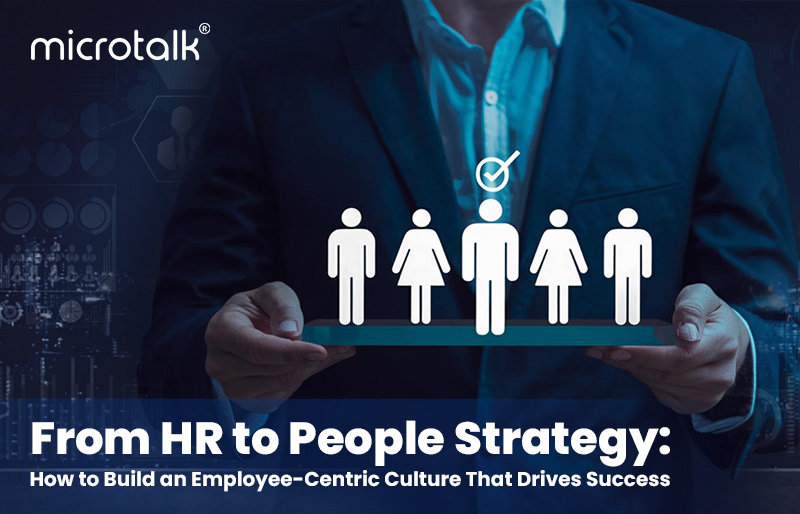From HR to People Strategy: How to Build an Employee-Centric Culture That Drives Success
The modern workplace is evolving at a rapid pace. Gone are the days when Human Resources (HR) was solely responsible for administrative tasks like payroll, recruitment, and compliance. Today, forward-thinking organizations are embracing a broader, more impactful approach—known as people strategy. This shift places employees at the center of business decisions, fostering a culture where individuals feel valued, empowered, and inspired to contribute their best.
In this comprehensive guide, we’ll explore how companies can transition from traditional HR practices to a dynamic people strategy that nurtures employee-centric cultures and drives long-term success.
-
Moving Beyond Processes: Prioritizing People Over Policies
Traditional HR departments often operate within rigid frameworks, focusing on rules, systems, and procedures. While these elements are necessary for organizational structure, they don’t always address the human side of work.
A people strategy, on the other hand, emphasizes the employee experience. It’s about creating an environment where individuals feel seen, heard, and appreciated. This approach encourages autonomy, creativity, and collaboration—key ingredients for innovation and growth.
Key Takeaway: Shift the focus from managing processes to enhancing people’s experiences. Empower employees to take ownership of their roles and contribute meaningfully to the organization’s mission.
-
Listening Actively: The Foundation of Employee Engagement
Building an employee-centric culture starts with one simple yet powerful action: listening. Organizations that prioritize open communication and feedback create a sense of belonging and trust among their workforce.
Effective listening strategies include:
- Conducting regular employee surveys to gauge satisfaction and identify areas for improvement.
- Creating anonymous feedback channels to encourage honest input.
- Holding one-on-one meetings to understand individual goals, challenges, and aspirations.
- Hosting town halls and open forums where leadership can engage directly with staff.
When employees feel heard, they’re more likely to stay engaged, motivated, and loyal to the company.
Key Takeaway: Make listening a core part of your culture. Use feedback to inform decisions and demonstrate that employee voices matter.
-
Investing in Employee Wellbeing: A Strategic Imperative
Employee wellbeing is no longer a “nice-to-have”—it’s a business necessity. Organizations that prioritize physical, mental, and emotional health see measurable improvements in productivity, retention, and overall morale.
Top wellbeing initiatives include:
- Offering flexible work arrangements, including remote and hybrid options.
- Providing access to mental health resources such as counseling, therapy, and mindfulness programs.
- Encouraging regular breaks and promoting a healthy work-life balance.
- Implementing wellness challenges, fitness programs, and ergonomic workspaces.
By supporting employees holistically, companies create a resilient workforce that can adapt to change and thrive under pressure.
Key Takeaway: Well-being is the foundation of performance. Invest in programs that support your team’s health and happiness.
-
Fostering Career Growth and Development: Fueling Ambition
Employees want more than just a paycheck—they want purpose, progress, and the opportunity to grow. A robust people strategy includes clear career pathways, continuous learning, and mentorship opportunities that help individuals reach their full potential.
Ways to support career development:
- Create personalized development plans aligned with employee goals.
- Offer training programs, workshops, and certifications to build new skills.
- Launch mentorship and coaching initiatives to guide professional growth.
- Promote from within to recognize and reward talent.
Organizations that invest in employee development not only retain top performers but also build a pipeline of future leaders.
Key Takeaway: Growth is a powerful motivator. Help employees advance their careers and they’ll help your business grow.
-
Building Trust Through Transparency and Communication
Trust is the cornerstone of any successful workplace. When employees trust their leaders and feel informed about company decisions, they’re more likely to stay committed and contribute positively.
Strategies to build trust include:
- Communicating openly about company goals, challenges, and performance.
- Sharing updates regularly through newsletters, meetings, and internal platforms.
- Encouraging managers to be approachable and responsive.
- Establishing clear policies and expectations that are consistently upheld.
Transparency fosters accountability and strengthens the bond between leadership and staff.
Key Takeaway: Trust is earned through honesty and consistency. Keep communication open and transparent to build a loyal workforce.
-
Embracing Diversity and Inclusion: Unlocking Innovation
A truly employee-centric culture celebrates diversity and promotes inclusion. When people from different backgrounds, experiences, and perspectives come together, they spark creativity and drive innovation.
Steps to create an inclusive workplace:
- Implement unbiased hiring practices to attract diverse talent.
- Provide diversity training to raise awareness and foster empathy.
- Create employee resource groups (ERGs) to support underrepresented communities.
- Ensure equal opportunities for advancement and recognition.
Inclusive cultures don’t just benefit employees—they enhance brand reputation, customer loyalty, and business performance.
Key Takeaway: Diversity is a strength. Build a workplace where everyone feels welcome, respected, and empowered to contribute.
Transforming HR into a Strategic People Function
The shift from traditional HR to a people-first strategy is more than a trend—it’s a transformation. By focusing on employee experience, wellbeing, growth, trust, and inclusion, organizations can build thriving cultures that attract top talent and drive sustainable success.
A people strategy transforms the workplace into a vibrant community where individuals feel connected to their purpose and aligned with company goals. When employees are supported and inspired, they become the driving force behind innovation, customer satisfaction, and business growth. Invest in your people, and they’ll invest in your mission.
